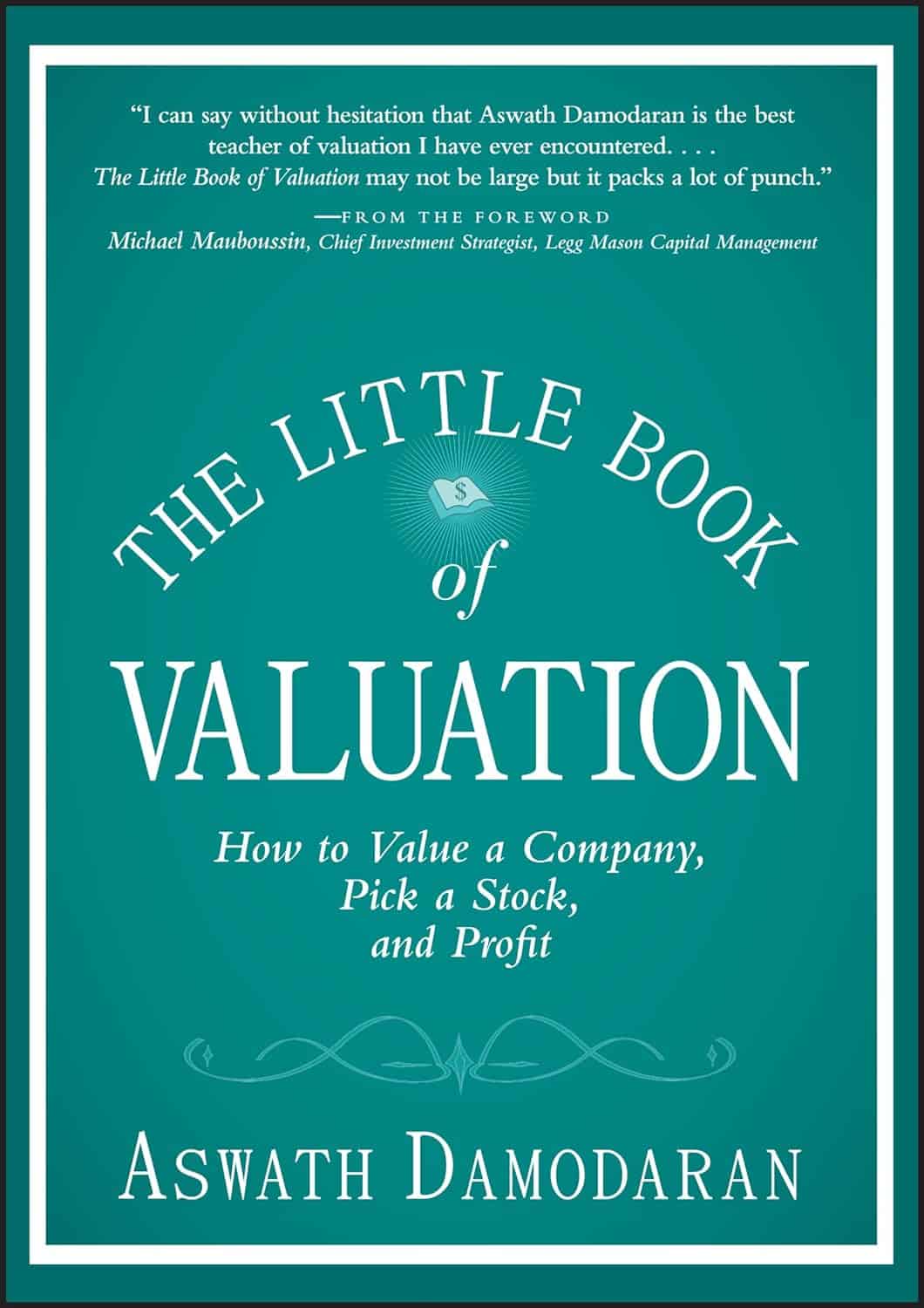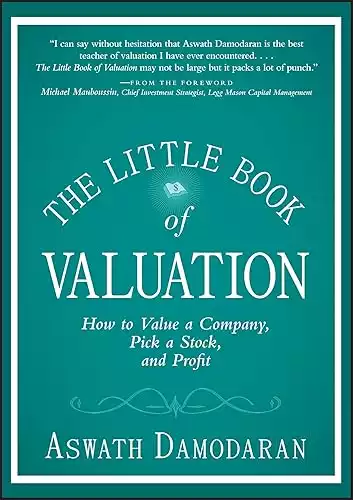Overview : The Little Book of Valuation Book
-
Book Title: The Little Book of Valuation
-
Author: Aswath Damodaran
-
Publication Date: May 2011
-
Rating: 4.5
-
price: $21.49
-
Pages: 256
About the Author
The author of The Little Book of Valuation by Aswath Damodaran, is a renowned finance professor at NYU's Stern School of Business, celebrated as the "Dean of Valuation." With extensive expertise in finance, he simplifies complex valuation principles for readers, making this essential guide accessible to both beginners and seasoned investors.
Introduction to The Little Book of Valuation Book
In the ever-evolving world of finance and investing, understanding the true value of assets is paramount. Aswath Damodaran's "The Little Book of Valuation" emerges as a beacon of clarity in this complex landscape. As a renowned finance professor at New York University's Stern School of Business, Damodaran, often hailed as the "Dean of Valuation," brings his wealth of knowledge to this concise yet powerful guide.
The Little Book of Valuation Book Summary
"The Little Book of Valuation" is a masterclass in distilling complex financial concepts into accessible insights. Damodaran takes readers on a journey through the intricacies of valuation, covering everything from fundamental principles to advanced techniques. The book's structure progressively builds the reader's understanding, making it an invaluable resource for both novice investors and seasoned financial professionals.
Key Themes Explored
-
- Foundational valuation principles
- Discounted Cash Flow (DCF) analysis
li>Relative valuation techniques
- Valuing high-growth and young companies
- The impact of intangible assets on valuation
- Globalization and technological influences on financial markets
Analysis of Themes
Damodaran's approach to valuation is both comprehensive and nuanced. He emphasizes that valuation is not merely a mathematical exercise but a blend of art and science. This perspective is particularly evident in his discussion of valuing high-growth companies, where traditional metrics may fall short. One of the book's strengths lies in its treatment of modern financial practices. Damodaran adeptly addresses the growing importance of intangible assets in today's knowledge-driven economy, providing invaluable insights for investors navigating sectors like technology and e-commerce.
"Valuation is not just about models; it's about understanding the story behind the numbers."
The author's exploration of market trends and their impact on valuation is particularly relevant in today's rapidly changing financial landscape. He touches upon the implications of cryptocurrencies and blockchain technology, offering a forward-thinking perspective on how these innovations might influence traditional valuation methods.
Writing Style
Damodaran's writing style is a testament to his teaching prowess. He employs clear, jargon-free language without sacrificing depth or complexity. The use of real-world examples and case studies brings theoretical concepts to life, making the book engaging and practical.
The Little Book of Valuation Book Strengths and Weaknesses
Strengths:
- Accessibility for readers of various expertise levels
- Comprehensive coverage of valuation techniques
- Real-world applications and case studies
- Integration of contemporary financial trends
Weaknesses:
- Some readers might find certain sections too technical
- Limited focus on personal finance applications
The Little Book of Valuation Related Books
While "The Little Book of Valuation" stands out for its concise yet comprehensive approach, it's worth comparing it to other notable works in the field. Benjamin Graham's "The Intelligent Investor" offers a more philosophical approach to value investing, while Phil Town's "Rule #1" provides a more simplified strategy for personal investors. Damodaran's book bridges the gap between these extremes, offering both depth and accessibility. It's particularly valuable for those looking to understand the mechanics behind valuation, rather than just following prescribed investment strategies.
Highlights from The Little Book of Valuation by Aswath Damodaran
Valuation Fundamentals: Provides a clear framework for understanding the basics of valuing companies.
Intrinsic vs. Relative Valuation: Covers both intrinsic valuation (value based on fundamentals) and relative valuation (value compared to similar assets).
Cash Flow Focus: Emphasizes the importance of cash flows and the role they play in determining value.
Discount Rates and Growth Rates: Highlights key factors like discount rates and growth rates that impact valuation calculations.
Practical Tools and Techniques: Offers tools and methods for valuing real-world companies of varying sizes.
Decision-Making Aid: Aids investors in making informed decisions by understanding a company’s true worth.
Conclusion of The Little Book of Valuation Review
"The Little Book of Valuation" is an essential read for anyone serious about mastering financial analysis and investment decision-making. Damodaran's expertise shines through every page, providing readers with a robust toolkit for navigating the complexities of modern markets. Whether you're an individual investor looking to refine your portfolio strategy, a finance student aiming to solidify your understanding of valuation principles, or a professional seeking to stay abreast of evolving market trends, this book offers invaluable insights.





